I love to build and create. LEGO toys were among my absolute favorites growing up, and I spent large chunks of elementary and middle school drawing towns, dungeons, and overworlds for video games I wanted to make. I've poured countless joyful hours into developing my perpetually in-progress ROM hack of Super Mario World, multiplayer maps for Heroes of Might and Magic III and Star Wars: Jedi Knight II: Jedi Outcast, and levels for basically every game that's ever given me a level editor. It should come as no surprise, then, that level design was easily my favorite part of working on OH JOES!.
I didn't set out to make a proper fangame—in fact, if you had told me the game would require extensive programming and 35 other people to finish, I would've laughed and dropped the idea on the spot. I was looking forward to a project that was 80% level design and graphics, 20% whatever else was necessary to make it a standalone download. All I wanted was another opportunity to make a Mega Man level, and I was willing to branch out and try my hand at a few new skills to make it happen.
In the short time that I had been designing Mega Man levels, I had learned some important lessons. In lieu of the "Lessons in Level Design" blog post I started a year ago but never finished writing, here are my key takeaways from Make a Good Mega Man Level Contest (MaGMML) and Mega Man Endless:
- Learning curve is always important, even if expert players are your target audience.
- Get other people to playtest your level, because you cannot accurately judge difficulty or fairness when you know more about the level at the beginning than players will know at the end.
- There's a line between variety and excess; keep the enemy and hazard selection focused.
- Keep an eye on level length, both in terms of screen count and completion time.
- Ideally, levels should be beatable without taking damage, using only the default weapon.
- Use instant death sparingly and deliberately.
- Anything players can do, they will do, no matter how inane or counter-intuitive it is.
- Setting player expectations is critical, especially in a nonstandard Mega Man level, because players otherwise make (usually false) assumptions based on their own unique gaming experiences.
- Consider the player's likely emotional state at various points in the level—fatigue, panic, and complacency can change the dynamic of the challenges.
- Give the player ample time and guidance to understand the nature of each challenge before being threatened with bodily harm, introducing new enemies and gimmicks in a (reasonably) safe environment.
- Aside from basic platforming mishaps, injury and death should only occur as a direct or indirect result of a Joe. Challenges surrounding power-ups bend this rule a bit, because you wouldn't subject yourself to extra danger if you didn't need power-ups to keep fighting Joes.
- Through special weapons, careful observation, damage boosting, power-ups, Game Over hints, and a reasonable amount of practice, any player of any skill level should be able to beat the game.
The first few screens of the game draw inspiration from the official Mega Man games, at least in terms of Joe placement. Just like in Bomb Man's stage, your first encounter with a Sniper Joe is out in the open with nowhere to hide, and your second encounter is on a ledge (though this time it's more feasible to hop up on the ledge if you prefer face-to-face combat). Although I would normally never kick off a level using something as complicated as a Sniper Joe—let alone with no safe place to observe the enemy's behavior—I wanted to emulate the experience of playing through the official games and encountering these enemies for the first time.
To maintain the element of player choice, I employed split paths—a hub room would introduce two new gimmicks in a safe environment, and then the player could pick whichever gimmick they preferred. The options I offered were never arbitrary; by the end of the game, I wanted players to have survived challenges based around forced movement (magnet vs quicksand), ubiquitous gimmicks people take for granted (ladder vs water), gimmicks that everyone hates (Guts lifts vs Quick lasers), destructible blocks (Dust blocks vs Chill blocks), and...uh...cone-shaped things (needles vs springs). OK, so that last one was a stretch, but I was running out of gimmicks in the MaGMML devkit that (a) had potentially interesting interactions with Joes, and (b) weren't too glitchy to use reliably.
That's why the puzzle-oriented challenge choice (Sheep blocks vs Yoku blocks) eventually changed to Sheep blocks vs fake blocks. Yoku blocks ended up being too much of a liability to keep, but I didn't have any good alternatives in the devkit (and I wasn't about to program another gimmick, given how much effort the Sheep blocks and Chill blocks were). Desperate, I turned to Mega Man 5 for inspiration: by simply adding a tile layer in front of the player, I could recreate the pass-through blocks seen briefly in Napalm Man's stage (and in one of the fortress stages). It was a lazy solution, but it offered some interesting Joe interactions and fit the puzzle mandate well enough.
I wrote a list of all the gimmicks in the game, and then I started mentally smashing them together. Most importantly, each choice of paths needed to offer players at least one gimmick they had definitely seen before. For example, a choice between "magnets + needles" or "Chill blocks + water" was out of the question, because it was entirely possible for players to have selected all the paths in Stage 2 that allowed them to avoid those gimmicks. My problem wasn't so much that these gimmicks hadn't been selected for their ability to work well together; it was that this restriction ruled out many of the combinations I actually wanted to use. Believe me, "Chill blocks + fake blocks" was not my first choice.
Of course, when I decided to add a fourth stage combining every gimmick with every other gimmick, all that careful planning went out the window. I still tried to give the player a choice between thematically similar options, but otherwise the design mentality was that (a) players should be pretty comfortable with most of the gimmicks by now, and (b) the abnormally high screen count would necessitate thinking strategically and using everything at one's disposal to survive—things I had tried to encourage from the very beginning.
It was exhausting to design a stage that was effectively 12 half-levels with connecting hubs. On the plus side, I was able to showcase a huge amount of variety in how Joes could be used, which was the whole point of this exercise. On the minus side, it's pretty clear that I was running out of ideas for a few of the combinations ("ladders + fake blocks" might as well just be "fake blocks"), and the nature of the stage made it incredibly hard to keep a steady difficulty curve. I can't tell you how many times I overhauled the Guts path so that it wasn't outrageously more difficult than the other paths at that juncture.
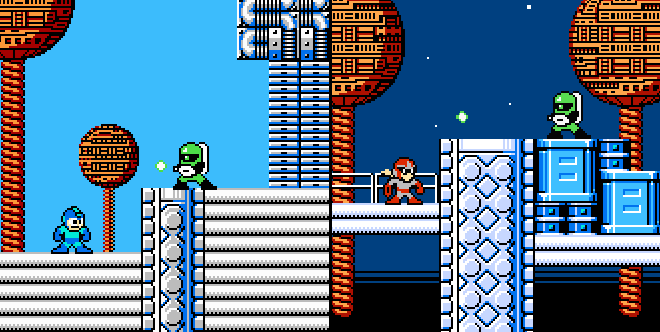
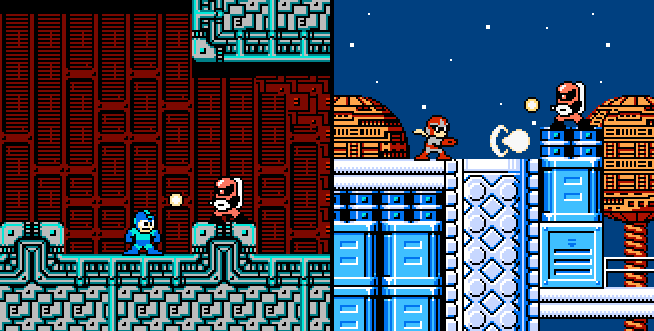

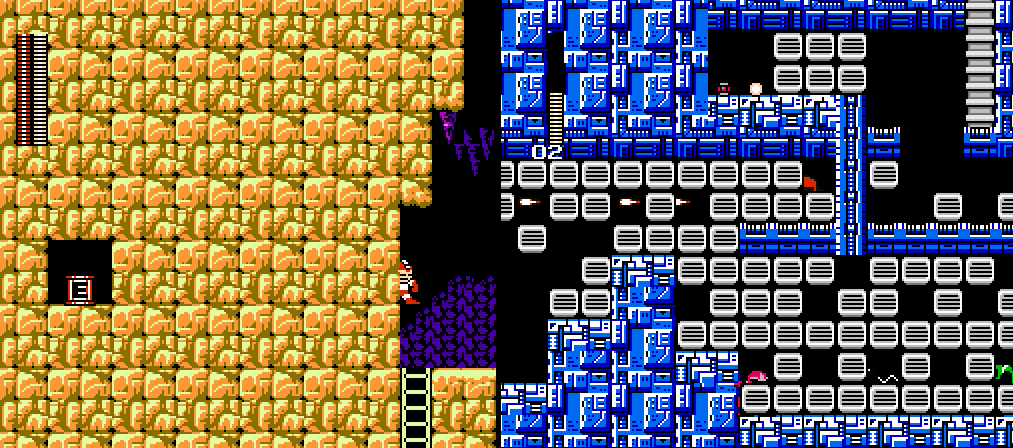
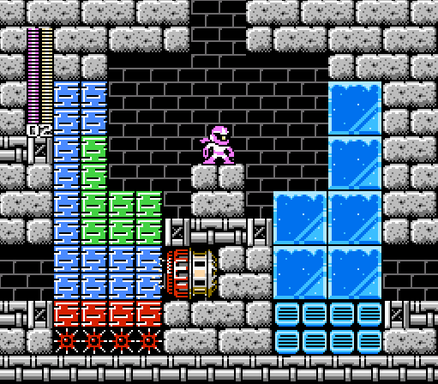
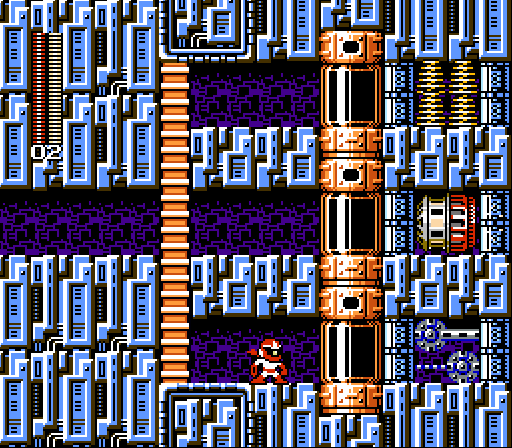
 RSS Feed
RSS Feed

